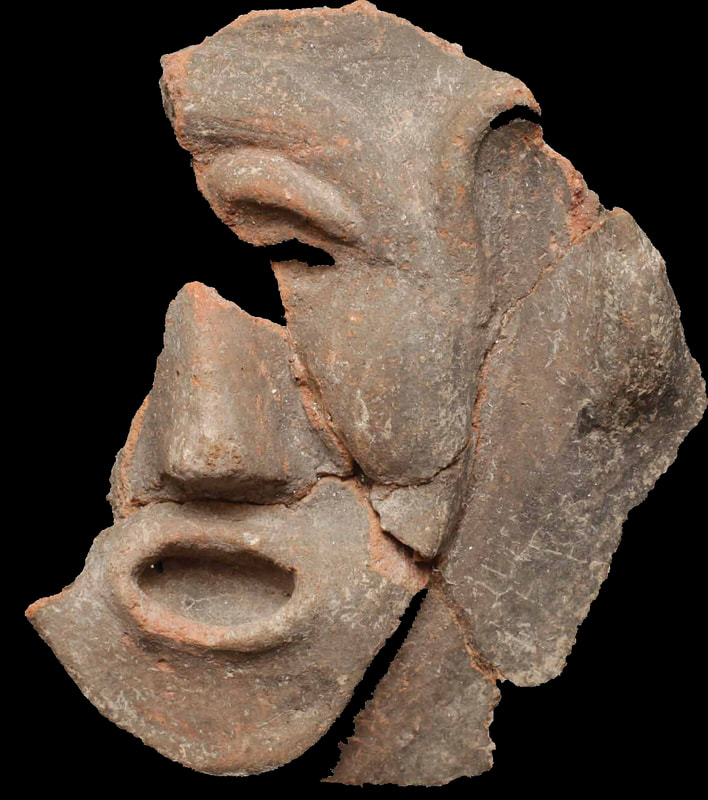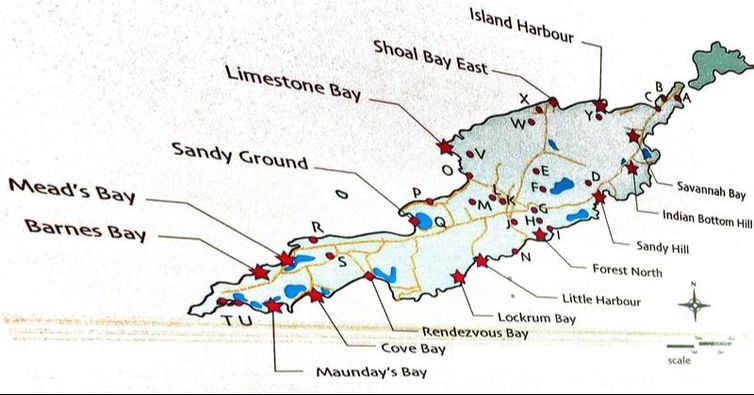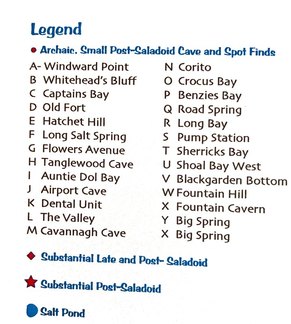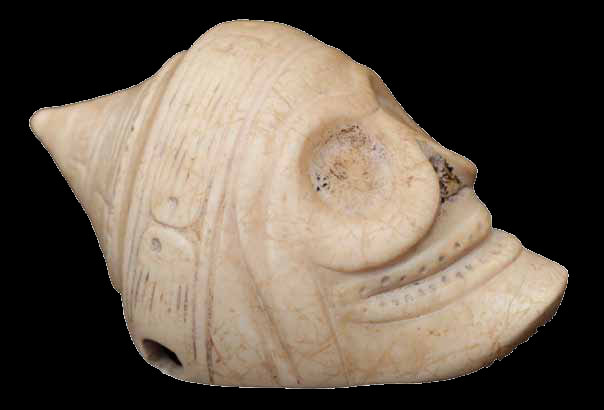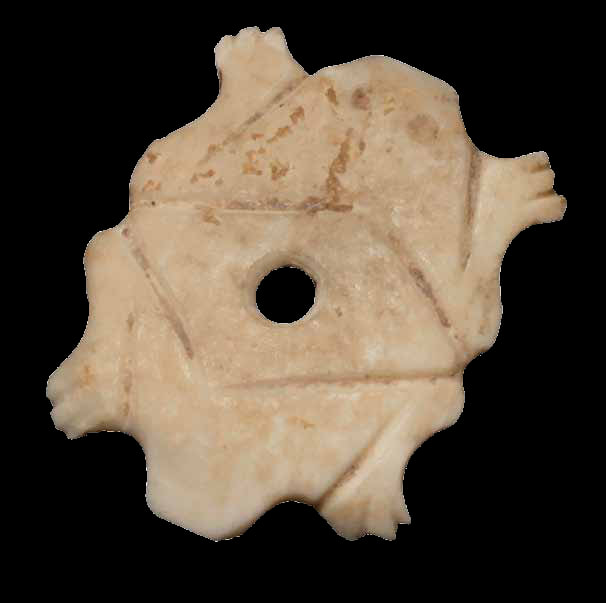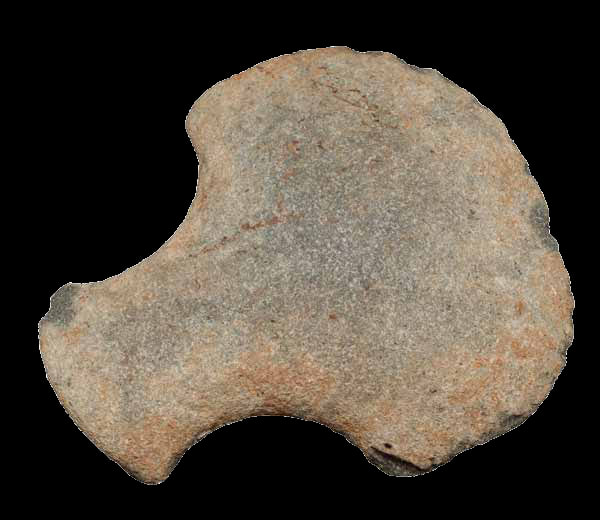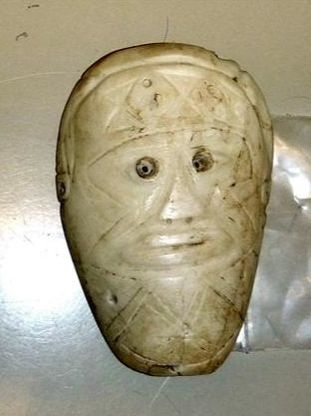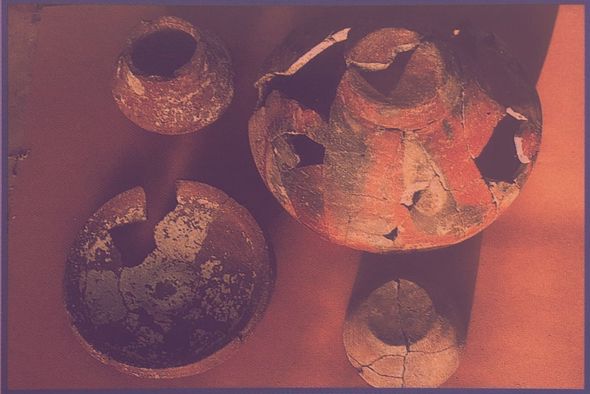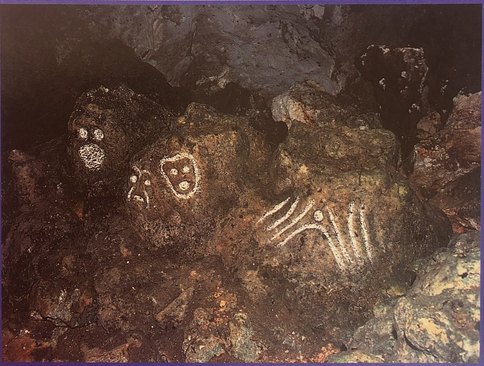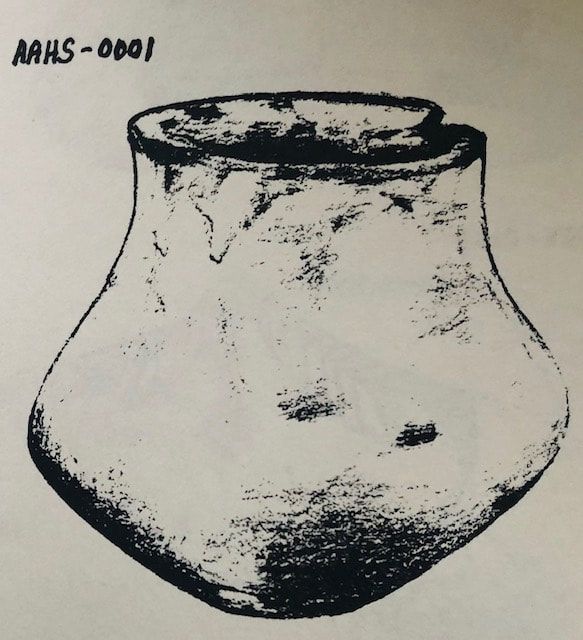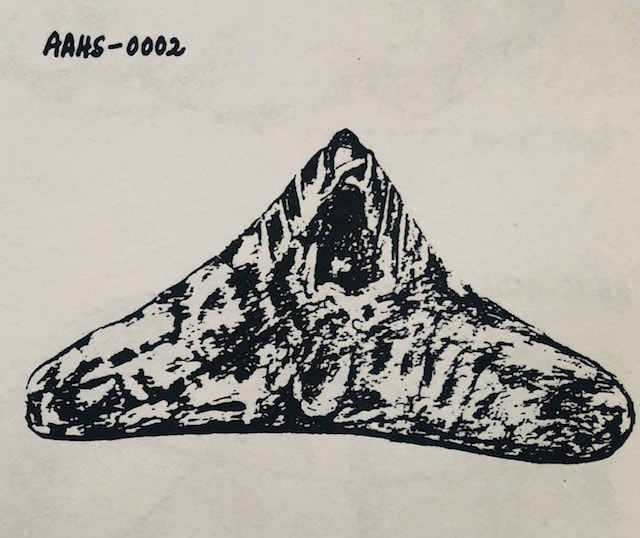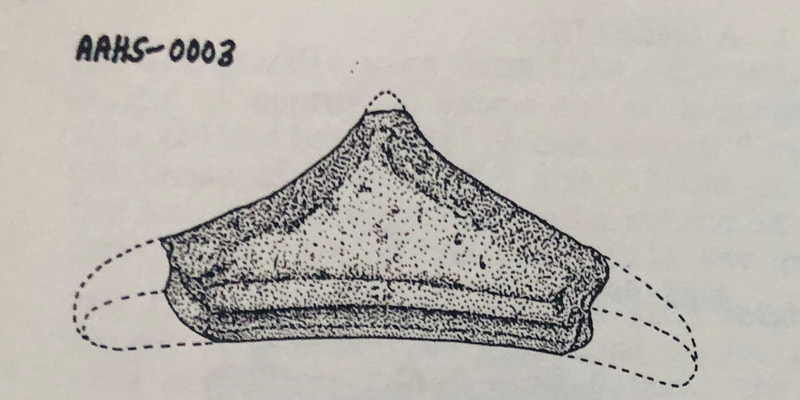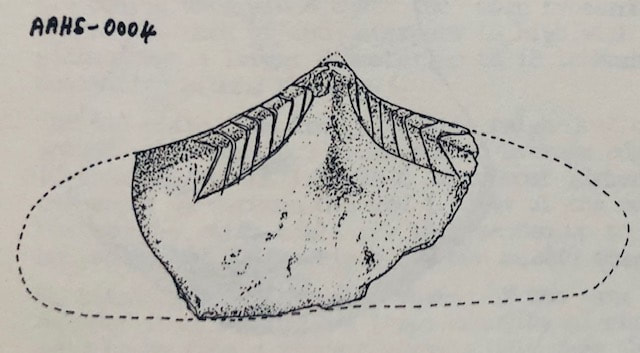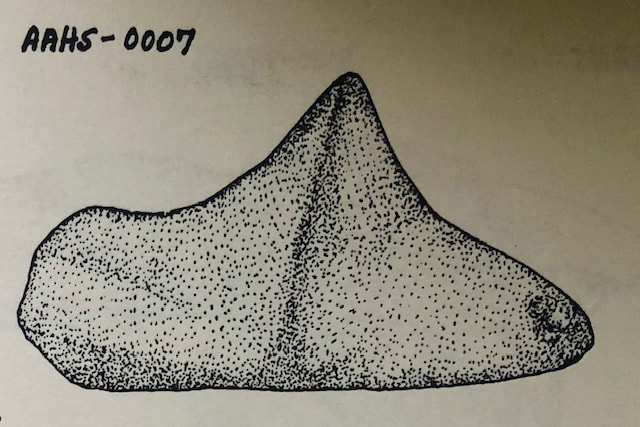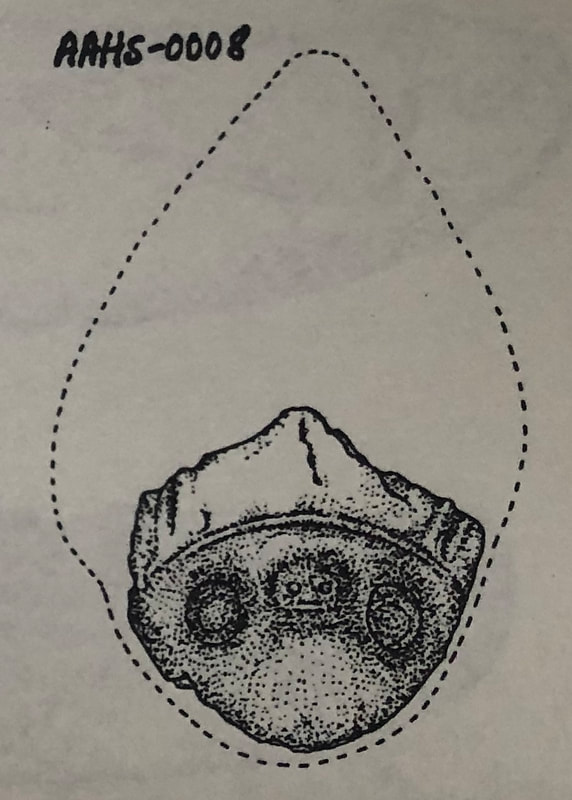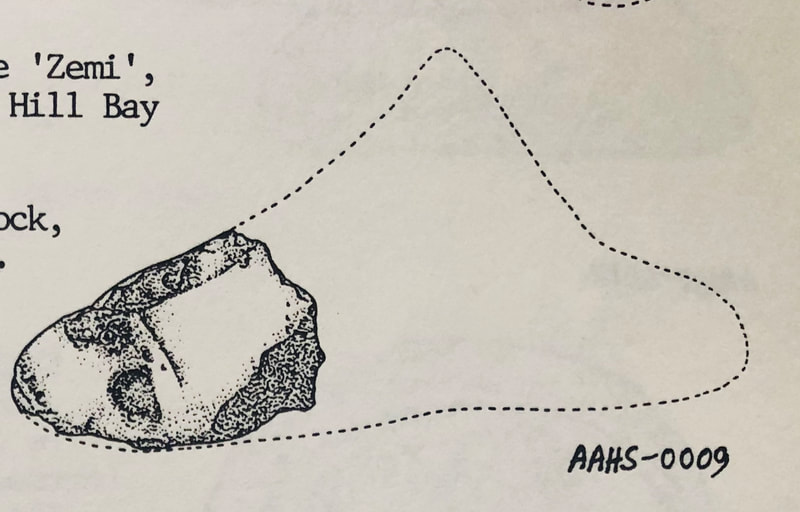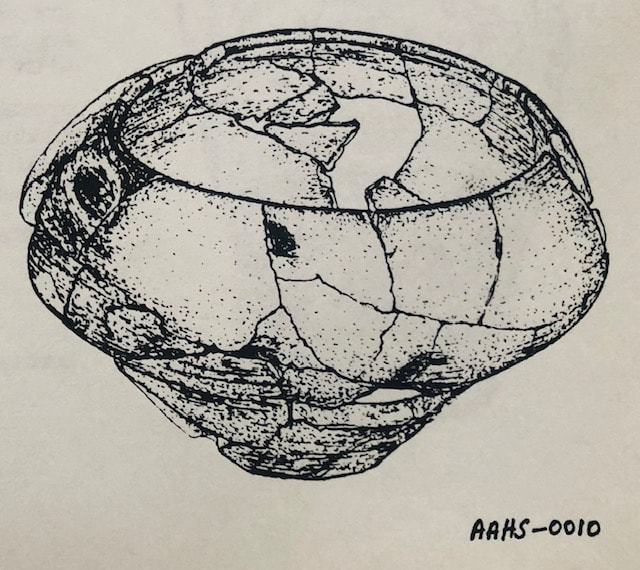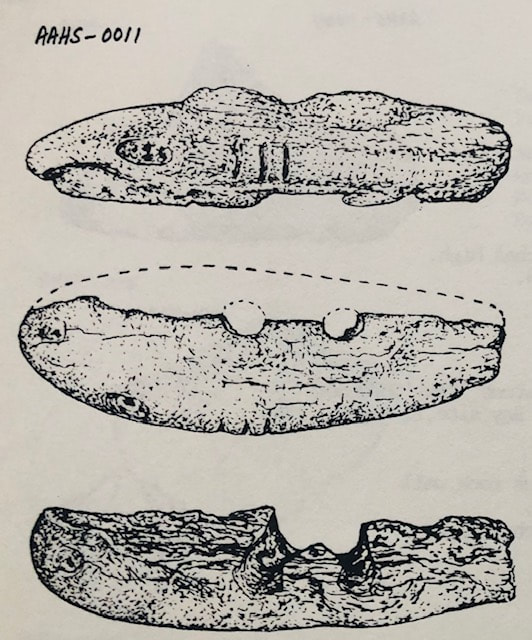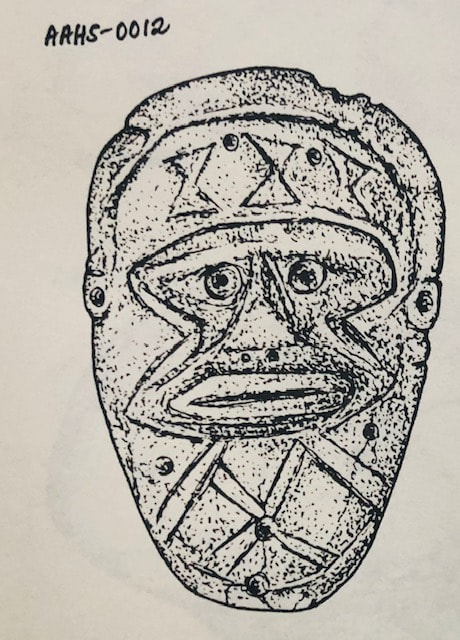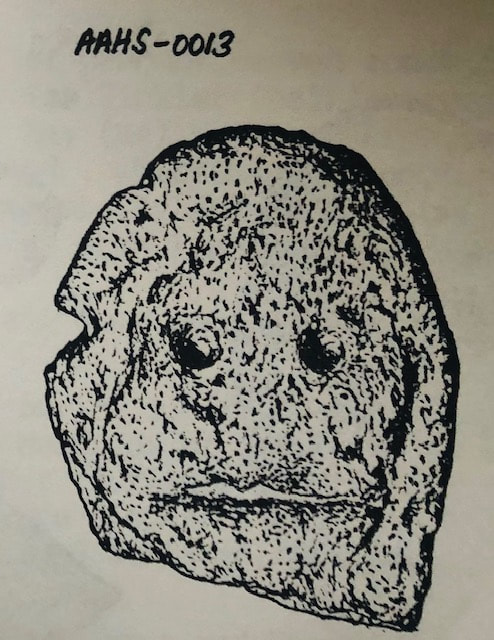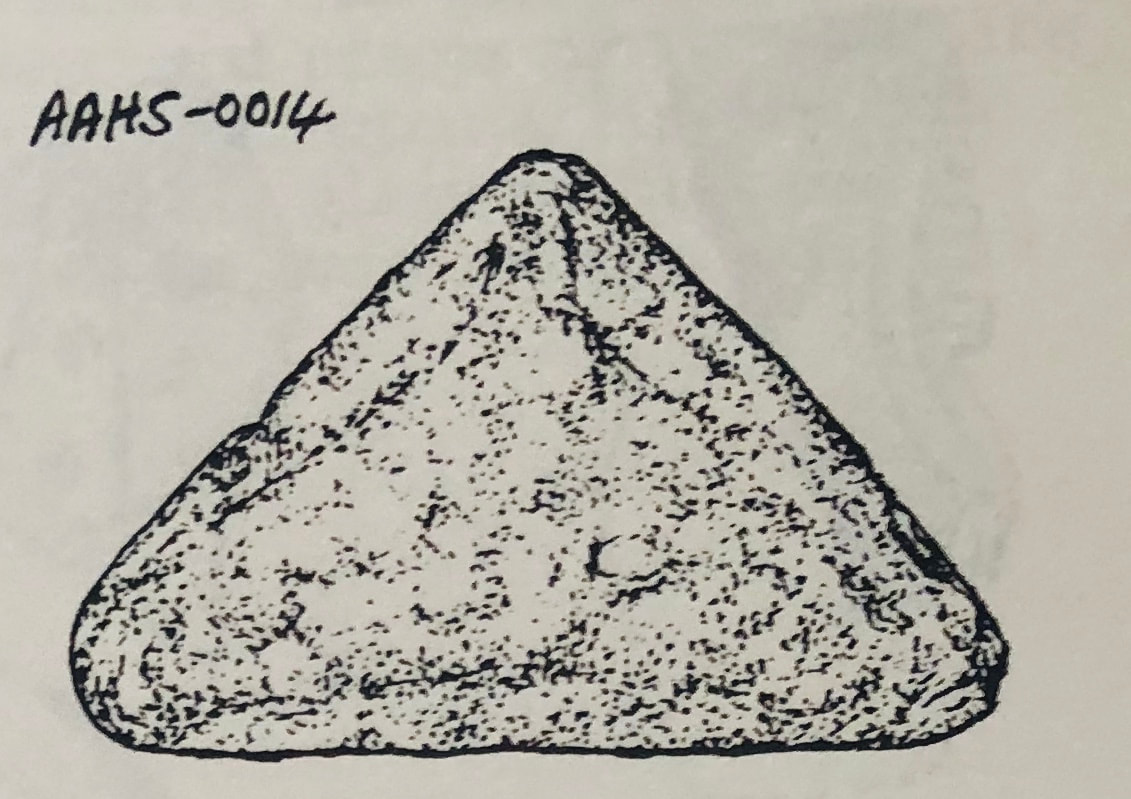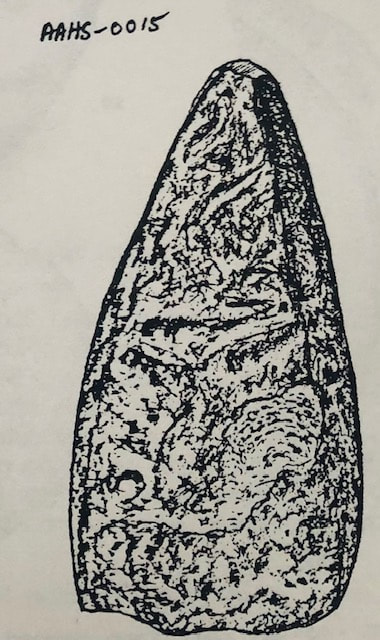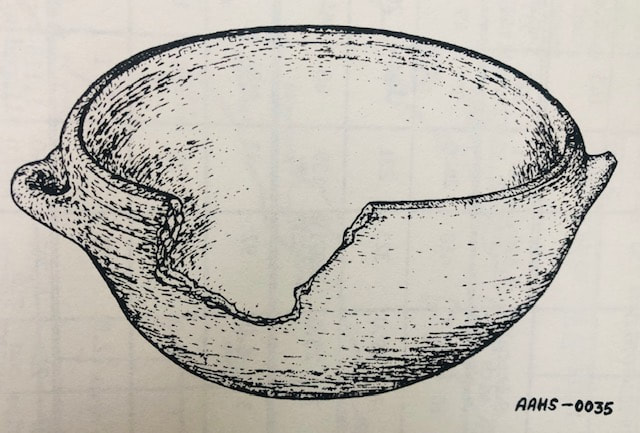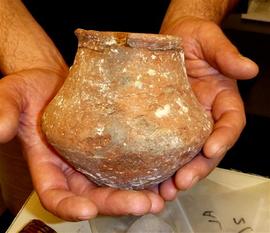Archaeological Records
Archaeologists investigate past human cultures by studying clues to past human behaviour. The archaeological record is made up of artefacts, food remains, and features such as petroglyphs (rockart) found at locations of past human behaviour, or archaeological sites. Because the Amerindians of Anguilla did not have a written language
tradition, the archaeological record contains our only clues about more than 3,500 years of human history in Anguilla. Artefacts from their sites testify to their artistic creativity and technical skill as potters, jewelers, and stoneworkers.
By studying clues from their sites, we have learned that pre-Columbian Anguillians imported greenstone and a stone called calcirudite from St. Martin to make axes and three-pointed stone “zemi” idols. We have learned that they imported decorated pottery bowls and also made them in Anguilla with clay from Crocus Bay. We know that they were involved in a regional network of exchange that circulated these goods as well as those that don’t preserve such as feathers, basketry and wood.
tradition, the archaeological record contains our only clues about more than 3,500 years of human history in Anguilla. Artefacts from their sites testify to their artistic creativity and technical skill as potters, jewelers, and stoneworkers.
By studying clues from their sites, we have learned that pre-Columbian Anguillians imported greenstone and a stone called calcirudite from St. Martin to make axes and three-pointed stone “zemi” idols. We have learned that they imported decorated pottery bowls and also made them in Anguilla with clay from Crocus Bay. We know that they were involved in a regional network of exchange that circulated these goods as well as those that don’t preserve such as feathers, basketry and wood.
The Anguilla Archaeological and Historical Society (AAHS) and visiting archaeologists have documented evidence of more than 40 Amerindian sites in Anguilla representing villages, ceremonial sites and smaller areas of activity. Archaeological surveys and excavations have been conducted at many of them, documenting the island’s rich heritage. For example, faculty and students from the University of Vermont have investigated sites in Barnes Bay, Rendezvous Bay, Sandy Ground, Sandy Hill, the Forest, Windward Point, and nearby Shoal Bay East. We know from these sites that, in all senses, Amerindians in Anguilla lived by the sea. Most of their villages were near the sea and salt ponds. In addition to growing crops like cassava, they depended on fish to survive and canoes to maintain their social and trade connections with communities on other islands.
ANGUILLA’S AMERINDIAN HERITAGE by Nik Douglas
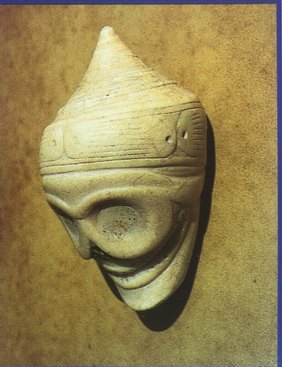
Anguilla has a rich Amerindian heritage which has been explored and documented only over the past two decades or so. The first archaeology survey of Anguilla, done by a visiting team of archaeologists in 1979, discovered one preceramic ‘archaic’ stone-age site and nineteen sites dating to the ‘ceramic’ period, including The Fountain, a ceremonial cave with fresh water pools and important rock carvings and petroglyphs. The report concluded: “Anguilla has one of the richest archaeological heritages in the region, which it should strive to protect and develop.” Largely because of these discoveries, Anguilla’s first luxury hotel was called Malliouhana – one of the Amerindian names for the island.
Founded in 1981, the Anguilla Archaeological and Historical Society organised field trips, looked for additional Amerindian habitations, monitored the existing ones and gathered cultural artefacts from the existing ones and gathered cultural artefacts from the surface and from recovery digs whenever sites were impacted by tourism development. Within a short time, the known Amerindian sites expanded to more than forty in Anguilla and the offshore cays, including villages, small habitations, cultivated areas, outposts and caves. The array of carvings and petroglyphs at The Fountain was further documented, and test pits dug, which confirmed the Amerindian use of the cave as a sacred sanctuary. A second major ceremonial cave with a water source – ‘Big Spring’ – was discovered and the petroglyphs and rock carvings recorded.
Scientists from several US, European and Caribbean institutions have carried out important field-work, including Cuban petroglyph experts who travelled to Anguilla from South America in an Amerindian canoe in November 1987. Over the years, specialists in Caribbean pre-Columbian archaeology made repeated visits, scientific digs and organised field schools, and Anguilla’s Amerindian heritage and its regional significance was firmly established. Work done by Dr James Peterson showed that many of the pre-Columbian ceramics found in Anguilla, including many from The Fountain, incorporated materials brought from other islands. Some of these ceramics were possibly used to contain offerings to the Amerindian deities.
More than 60,000 of Anguilla’s Amerindian artefacts have now been collected and properly documented through research funded by a grant from UNESCO (United Nations Educational Social and Cultural Organisation). Many components of Anguilla pre-Columbian sites have now been scientifically dated, proving that Amerindians arrived and lived here at least 3200 years ago (the archaic period), and settled here repeatedly, establishing large village communities, seemingly reaching a population peak around 600 years ago. These Amerindians were of Arawak cultures from mainland South America. They were peaceful cultivators, mariners and fisher folk, playful yet spiritually motivated people governed by chiefs whose culture included ballgames, music, art and dance. Their contributions to the world include the development of cotton, corn, cassava, pineapple, and other key crops, as well as the words ‘hammock’, ‘tobacco’, ‘barbecue’ and ‘hurricane’. Their settlements were located throughout Anguilla and were in evidence up to the late 15th century – around the time of the arrival of Christopher Columbus. The Caribs were a war-like Amerindian culture whose tribes raided and migrated to some islands in the region about the same time. A Carib on Anguilla, from Dominica and St Vincent, occurred in 1656. But to date there is no evidence of any permanent Carib settlements here.
Founded in 1981, the Anguilla Archaeological and Historical Society organised field trips, looked for additional Amerindian habitations, monitored the existing ones and gathered cultural artefacts from the existing ones and gathered cultural artefacts from the surface and from recovery digs whenever sites were impacted by tourism development. Within a short time, the known Amerindian sites expanded to more than forty in Anguilla and the offshore cays, including villages, small habitations, cultivated areas, outposts and caves. The array of carvings and petroglyphs at The Fountain was further documented, and test pits dug, which confirmed the Amerindian use of the cave as a sacred sanctuary. A second major ceremonial cave with a water source – ‘Big Spring’ – was discovered and the petroglyphs and rock carvings recorded.
Scientists from several US, European and Caribbean institutions have carried out important field-work, including Cuban petroglyph experts who travelled to Anguilla from South America in an Amerindian canoe in November 1987. Over the years, specialists in Caribbean pre-Columbian archaeology made repeated visits, scientific digs and organised field schools, and Anguilla’s Amerindian heritage and its regional significance was firmly established. Work done by Dr James Peterson showed that many of the pre-Columbian ceramics found in Anguilla, including many from The Fountain, incorporated materials brought from other islands. Some of these ceramics were possibly used to contain offerings to the Amerindian deities.
More than 60,000 of Anguilla’s Amerindian artefacts have now been collected and properly documented through research funded by a grant from UNESCO (United Nations Educational Social and Cultural Organisation). Many components of Anguilla pre-Columbian sites have now been scientifically dated, proving that Amerindians arrived and lived here at least 3200 years ago (the archaic period), and settled here repeatedly, establishing large village communities, seemingly reaching a population peak around 600 years ago. These Amerindians were of Arawak cultures from mainland South America. They were peaceful cultivators, mariners and fisher folk, playful yet spiritually motivated people governed by chiefs whose culture included ballgames, music, art and dance. Their contributions to the world include the development of cotton, corn, cassava, pineapple, and other key crops, as well as the words ‘hammock’, ‘tobacco’, ‘barbecue’ and ‘hurricane’. Their settlements were located throughout Anguilla and were in evidence up to the late 15th century – around the time of the arrival of Christopher Columbus. The Caribs were a war-like Amerindian culture whose tribes raided and migrated to some islands in the region about the same time. A Carib on Anguilla, from Dominica and St Vincent, occurred in 1656. But to date there is no evidence of any permanent Carib settlements here.
